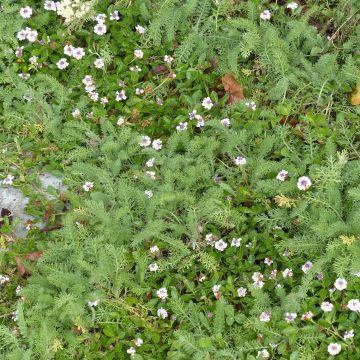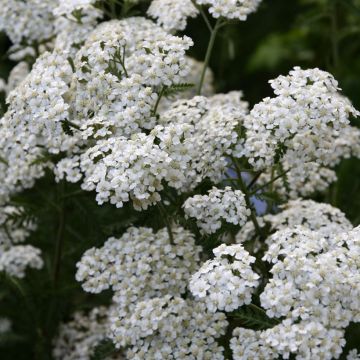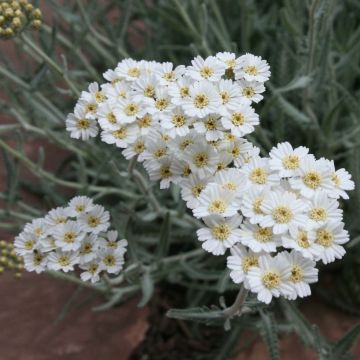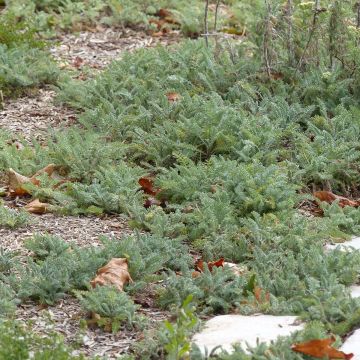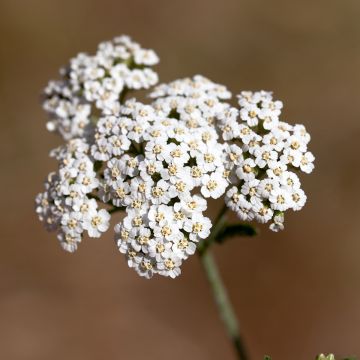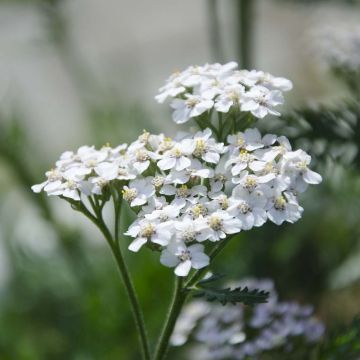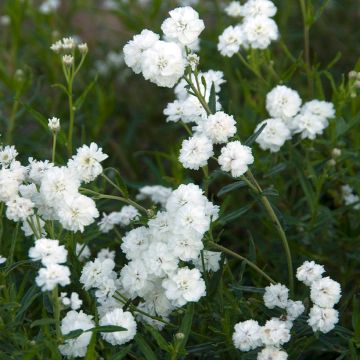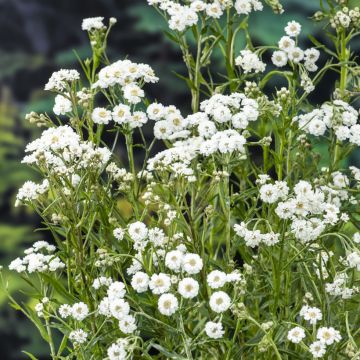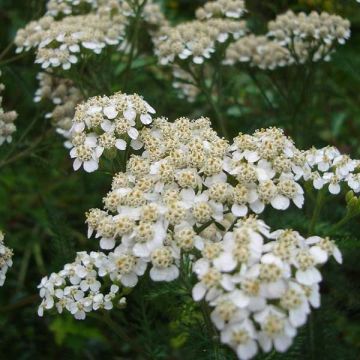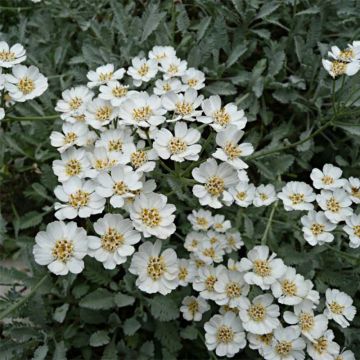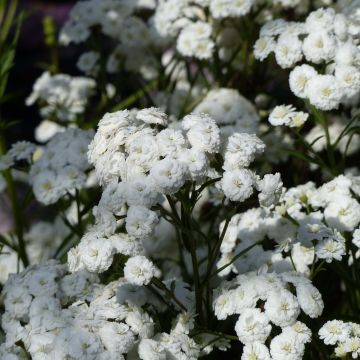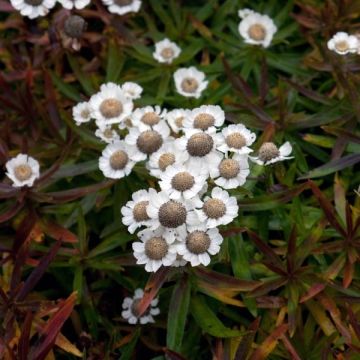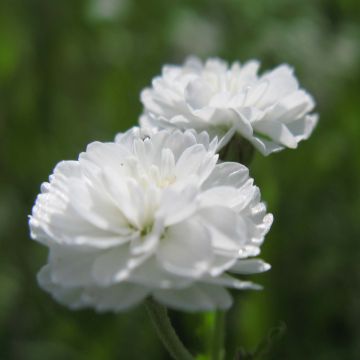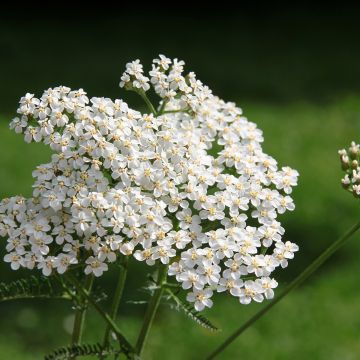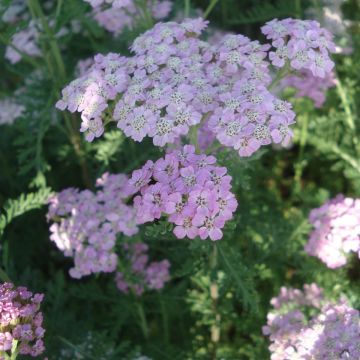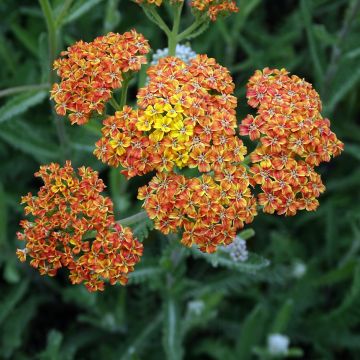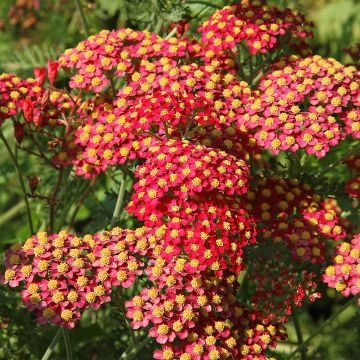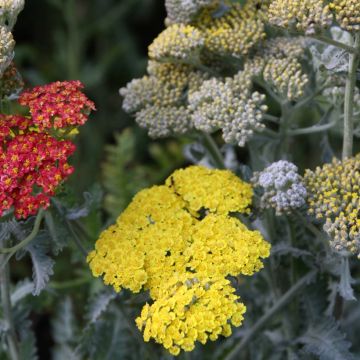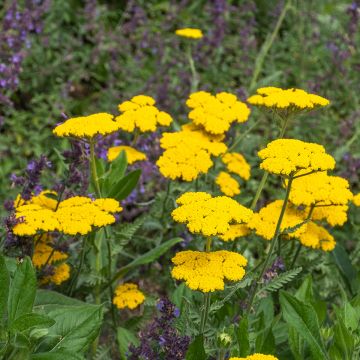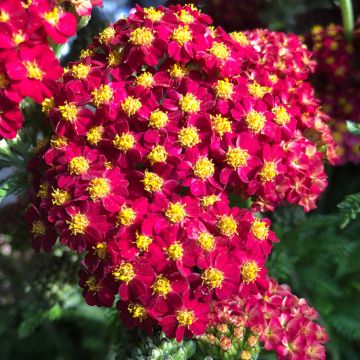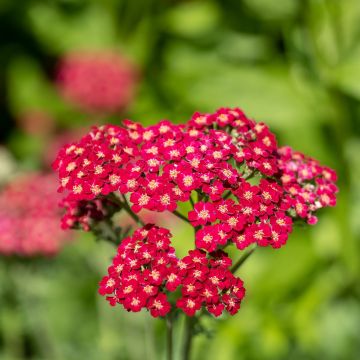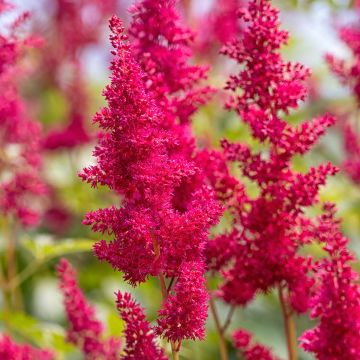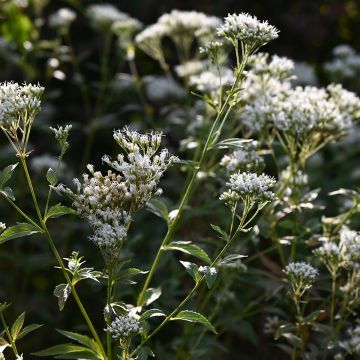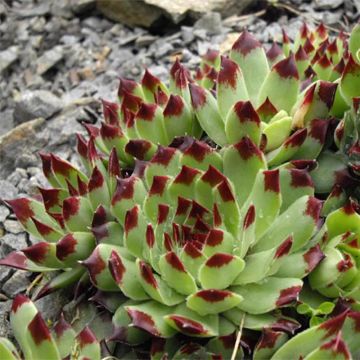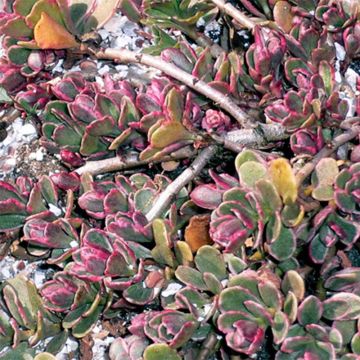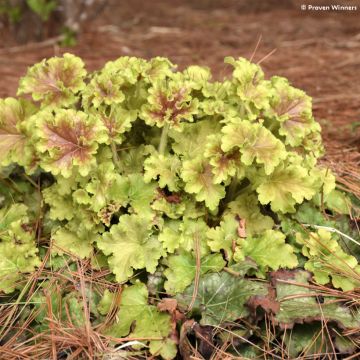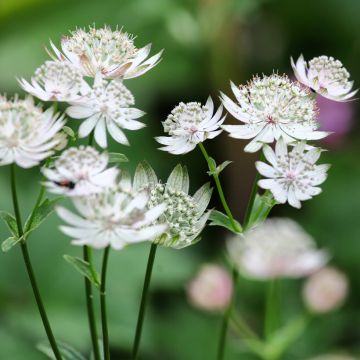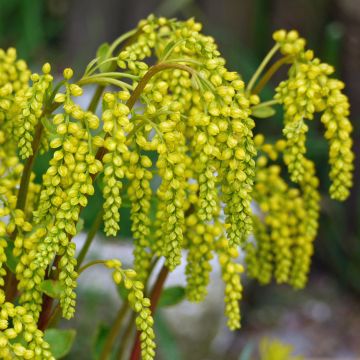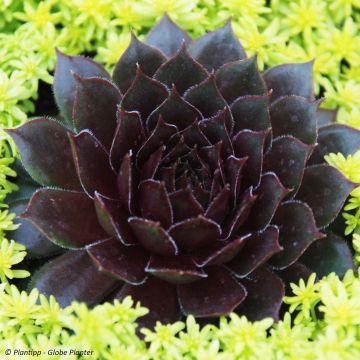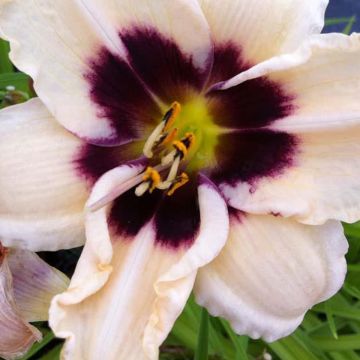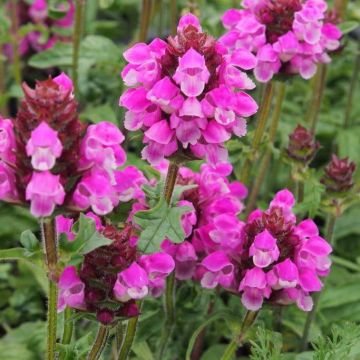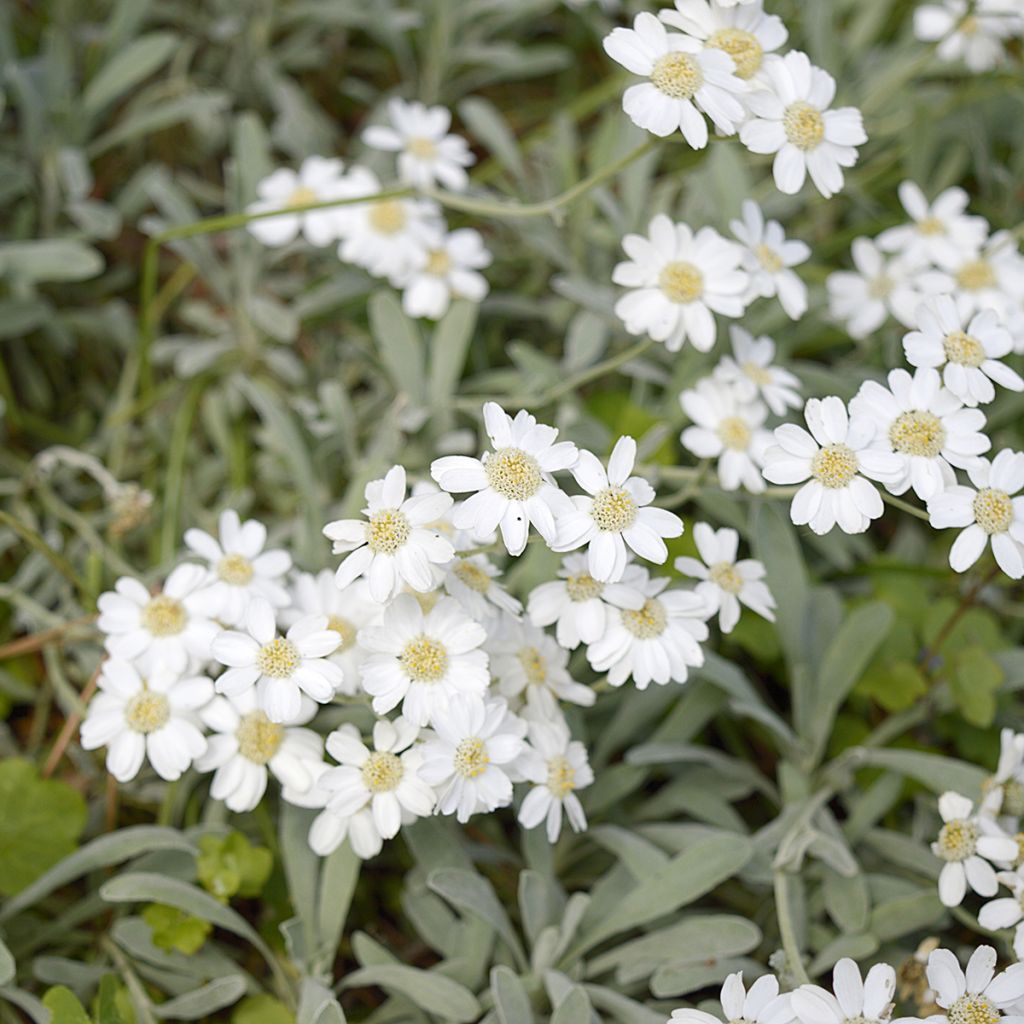

Achillea ageratifolia
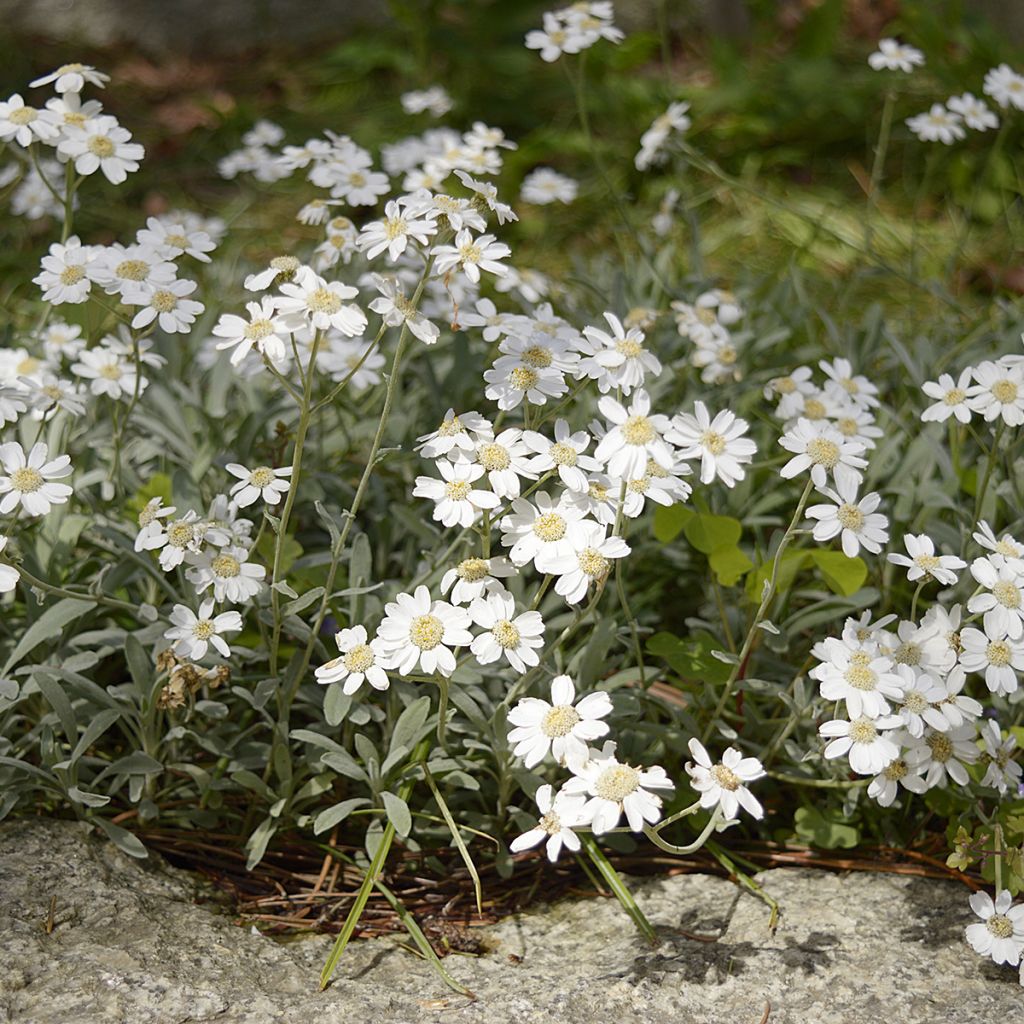

Achillea ageratifolia
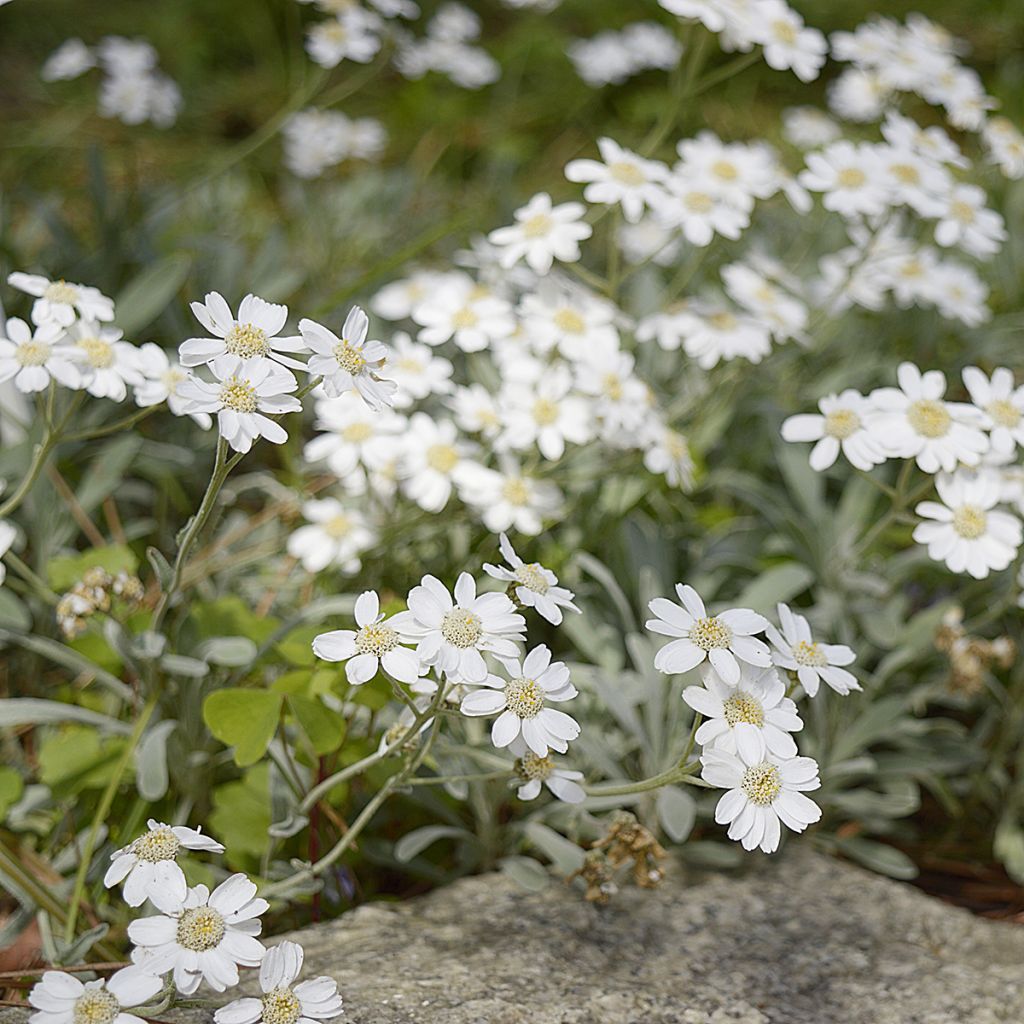

Achillea ageratifolia
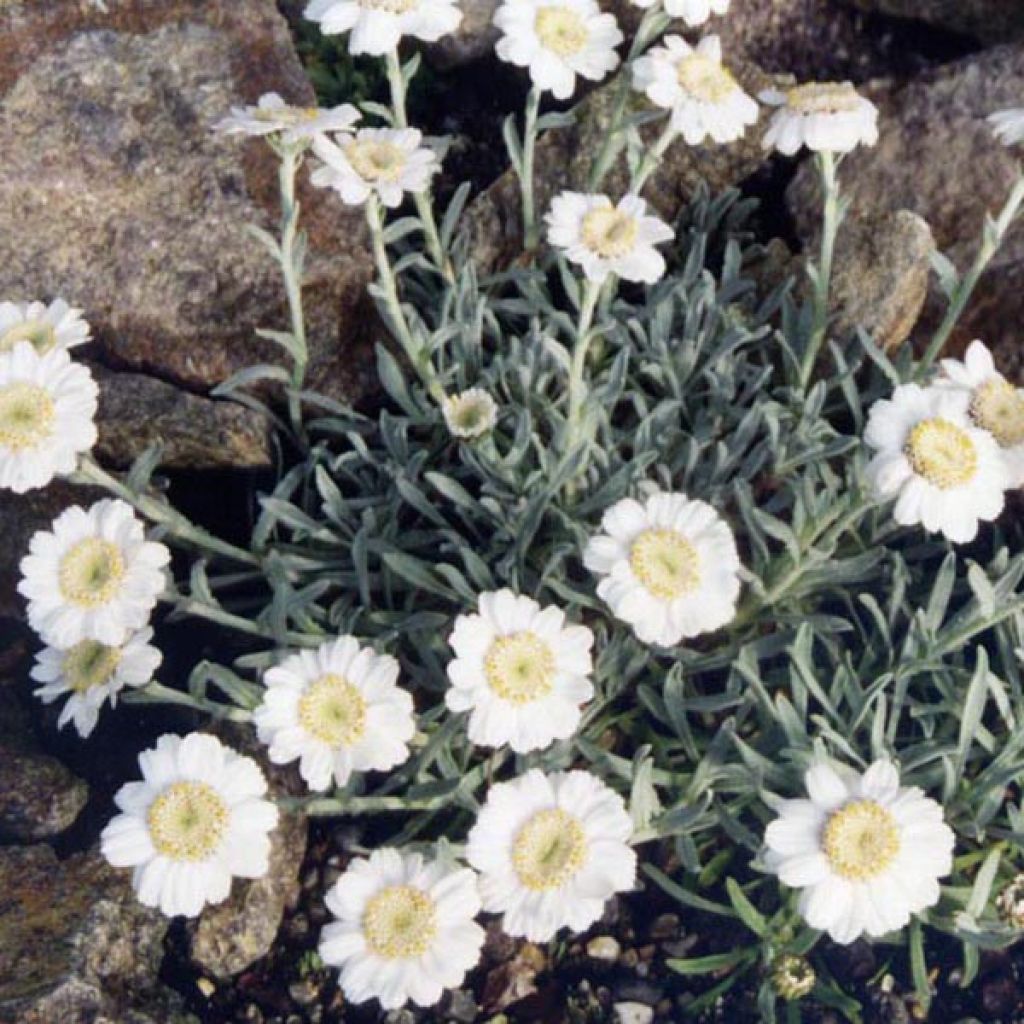

Achillea ageratifolia
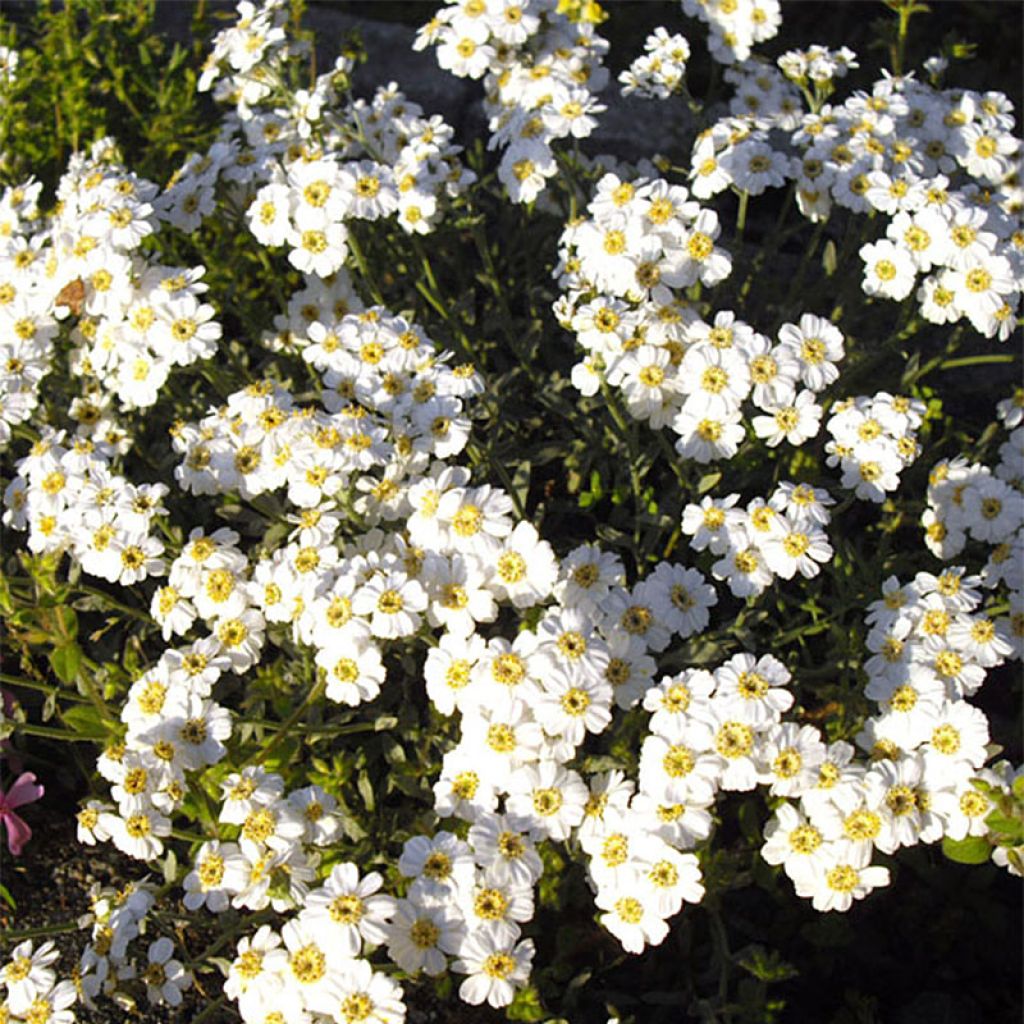

Achillea ageratifolia
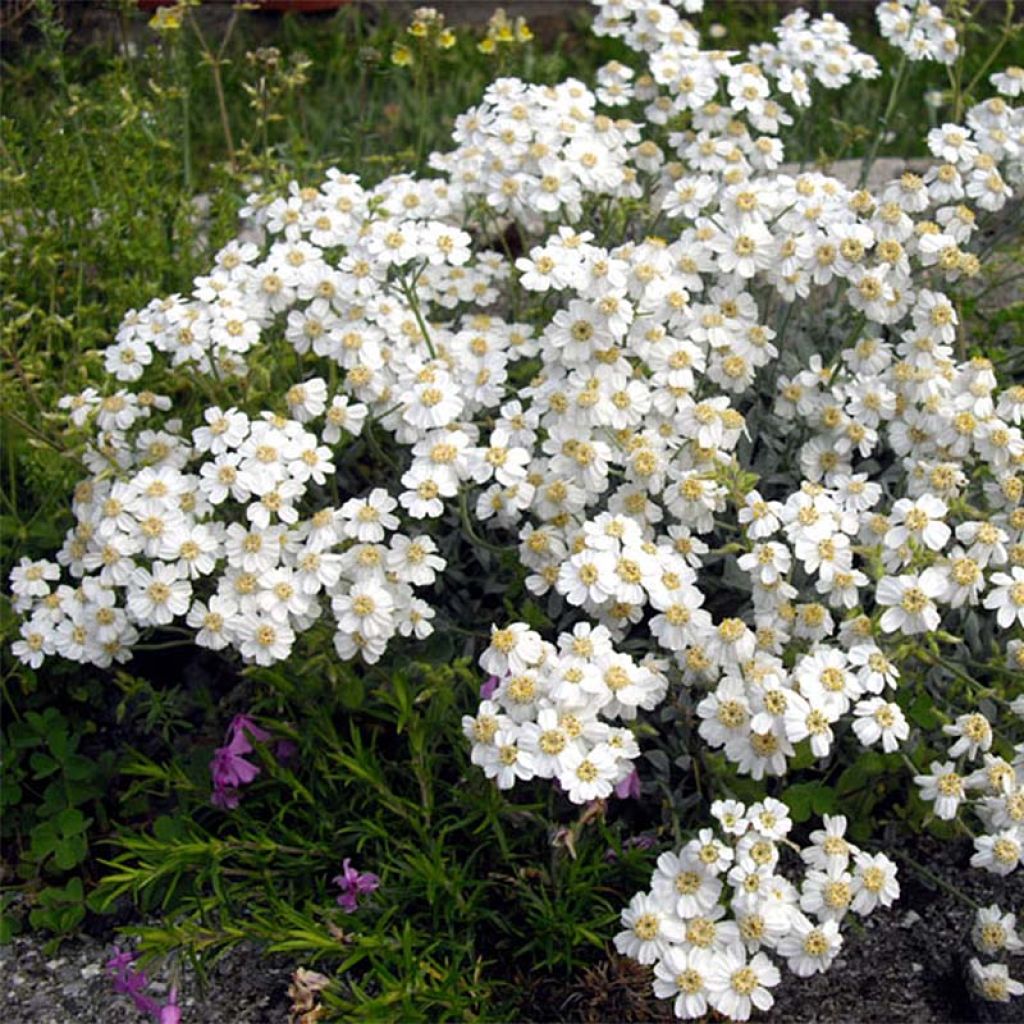

Achillea ageratifolia
Achillea ageratifolia
Achillea ageratifolia
Balkan yarrow, Greek yarrow
Why not try an alternative variety in stock?
View all →This plant carries a 12 months recovery warranty
More information
We guarantee the quality of our plants for a full growing cycle, and will replace at our expense any plant that fails to recover under normal climatic and planting conditions.
From €5.90 for pickup delivery and €6.90 for home delivery
Express home delivery from €8.90.

Does this plant fit my garden?
Set up your Plantfit profile →
Description
The Achillea ageratifolia, also known as Ageratum-leaved yarrow, is a small yarrow plant that resembles Achillea umbellata. This small perennial plant forms dense, silvery cushions that are as pleasing to the eye as they are to the touch. Its aromatic and slightly fuzzy foliage remains evergreen throughout the winter. Its white flowers with pale yellow centres create a very bright combination with the cushion of leaves in late spring. This excellent rock garden perennial requires little maintenance. It can be grown in full sun, in any well-drained soil, alone or in combination with other ground cover plants.
The Achillea ageratifolia, from the Asteraceae family, is native to the Balkans. The Royal Horticultural Society has awarded this perennial for its ornamental qualities and performance in the garden. The plant forms a cushion 15 cm (6in) tall when flowering 5 to 10 cm (2 to 4in) for the foliage, depending on the growing conditions. It spreads slowly on the ground for up to 30 cm through short stolons. Its foliage remains evergreen throughout winter in mild climates. Linear in shape, it is finely toothed and covered with a fine greyish-silver fuzz that becomes lighter in July-August, giving it a velvety appearance that is pleasant to the touch. When crushed, it releases a pleasant fragrance on the skin. Flowering occurs from May-June to July-August, depending on the climate. The flower heads are pure white with a creamy yellow centre.
All yarrows thrive in the sun and are extremely hardy. The Achillea ageratifolia, requiring very little maintenance, is a small ground cover that can be used in a rock garden, of course, along the edge of a flower bed if the soil is well-drained. It is an excellent solution for dry slopes as it is water-efficient and non-invasive. It also helps to prevent the spread of unwanted plants, giving the garden a pristine, silver appearance. It can be paired with other low-growing or cushion-forming plants such as Geranium sanguineum, Erigeron karvinskianus, Nepeta x faassenii, etc. Many combinations are possible, including dwarf Teucrium, Aphyllantes monspeliensis, Artemisia lanata, Centaurea bella, Thymus (hirsutus, ciliatus, lanigerus), or other yarrows (millefolium, coarctata, nobilis).
Report an error about the product description
Achillea ageratifolia in pictures
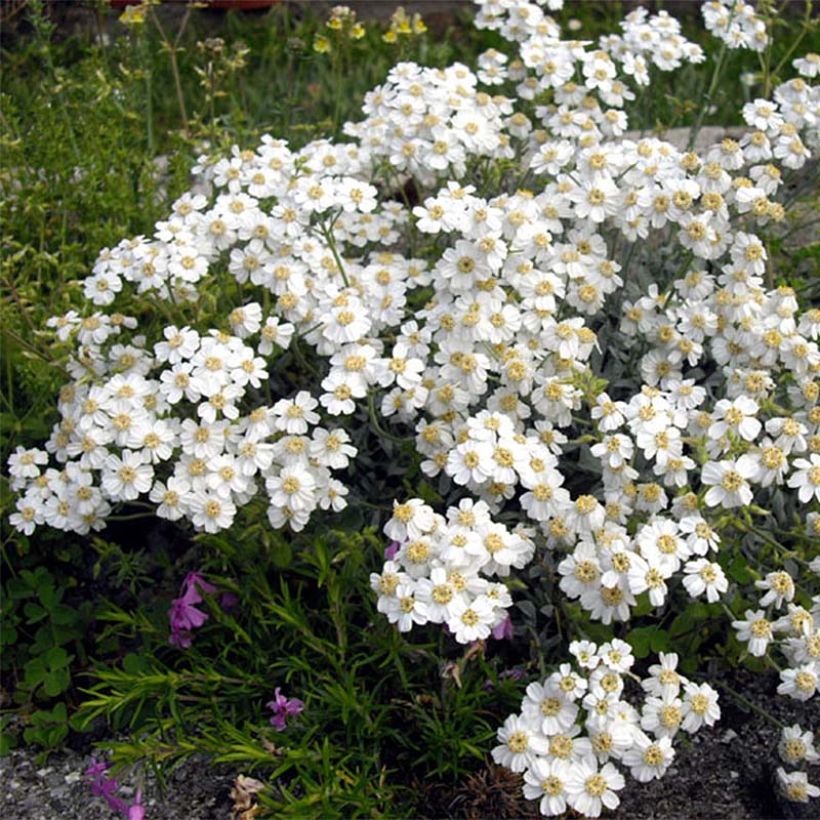

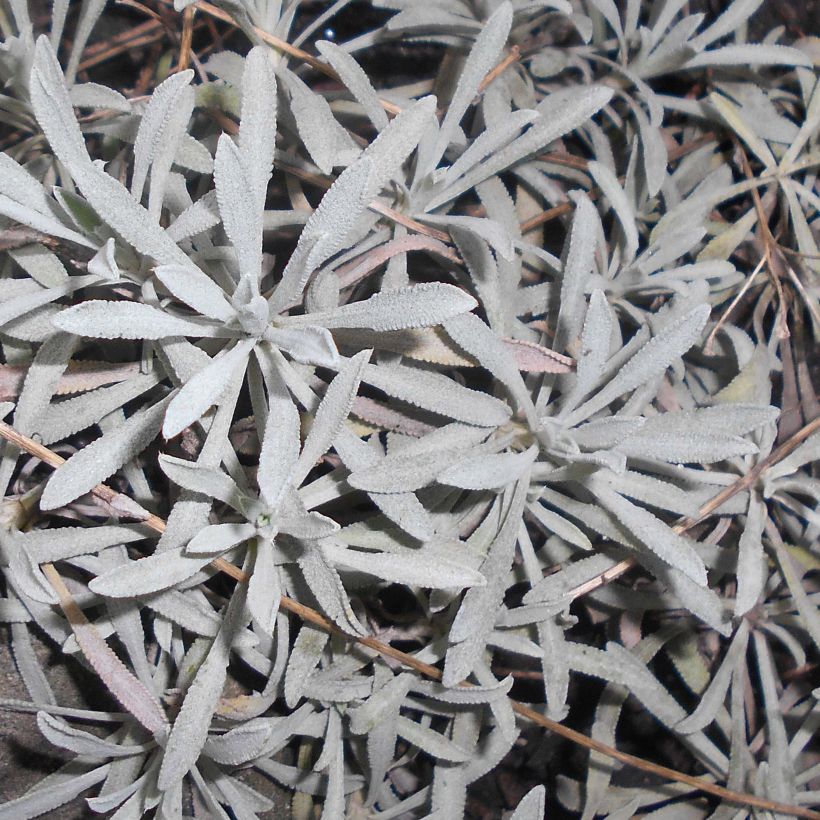



Flowering
Foliage
Plant habit
Botanical data
Achillea
ageratifolia
Asteraceae
Balkan yarrow, Greek yarrow
Caucasus
Other Achillea
Planting and care
Achillea ageratifolia grows easily in full sun and well-prepared, well-drained soil. It can adapt to all types of soils, including sandy, rocky, limestone, and well-drained clay soils, even in dry conditions during summer. However, it can't handle winter moisture if the soil is heavy, which may affect its hardiness (about -15°C (5°F) for a brief period). It's recommended to weed the plants carefully during the first two years so that they can grow better.
Planting period
Intended location
Care
This item has not been reviewed yet - be the first to leave a review about it.
Summer flowering perennials
Haven't found what you were looking for?
Hardiness is the lowest winter temperature a plant can endure without suffering serious damage or even dying. However, hardiness is affected by location (a sheltered area, such as a patio), protection (winter cover) and soil type (hardiness is improved by well-drained soil).

Photo Sharing Terms & Conditions
In order to encourage gardeners to interact and share their experiences, Promesse de fleurs offers various media enabling content to be uploaded onto its Site - in particular via the ‘Photo sharing’ module.
The User agrees to refrain from:
- Posting any content that is illegal, prejudicial, insulting, racist, inciteful to hatred, revisionist, contrary to public decency, that infringes on privacy or on the privacy rights of third parties, in particular the publicity rights of persons and goods, intellectual property rights, or the right to privacy.
- Submitting content on behalf of a third party;
- Impersonate the identity of a third party and/or publish any personal information about a third party;
In general, the User undertakes to refrain from any unethical behaviour.
All Content (in particular text, comments, files, images, photos, videos, creative works, etc.), which may be subject to property or intellectual property rights, image or other private rights, shall remain the property of the User, subject to the limited rights granted by the terms of the licence granted by Promesse de fleurs as stated below. Users are at liberty to publish or not to publish such Content on the Site, notably via the ‘Photo Sharing’ facility, and accept that this Content shall be made public and freely accessible, notably on the Internet.
Users further acknowledge, undertake to have ,and guarantee that they hold all necessary rights and permissions to publish such material on the Site, in particular with regard to the legislation in force pertaining to any privacy, property, intellectual property, image, or contractual rights, or rights of any other nature. By publishing such Content on the Site, Users acknowledge accepting full liability as publishers of the Content within the meaning of the law, and grant Promesse de fleurs, free of charge, an inclusive, worldwide licence for the said Content for the entire duration of its publication, including all reproduction, representation, up/downloading, displaying, performing, transmission, and storage rights.
Users also grant permission for their name to be linked to the Content and accept that this link may not always be made available.
By engaging in posting material, Users consent to their Content becoming automatically accessible on the Internet, in particular on other sites and/or blogs and/or web pages of the Promesse de fleurs site, including in particular social pages and the Promesse de fleurs catalogue.
Users may secure the removal of entrusted content free of charge by issuing a simple request via our contact form.
The flowering period indicated on our website applies to countries and regions located in USDA zone 8 (France, the United Kingdom, Ireland, the Netherlands, etc.)
It will vary according to where you live:
- In zones 9 to 10 (Italy, Spain, Greece, etc.), flowering will occur about 2 to 4 weeks earlier.
- In zones 6 to 7 (Germany, Poland, Slovenia, and lower mountainous regions), flowering will be delayed by 2 to 3 weeks.
- In zone 5 (Central Europe, Scandinavia), blooming will be delayed by 3 to 5 weeks.
In temperate climates, pruning of spring-flowering shrubs (forsythia, spireas, etc.) should be done just after flowering.
Pruning of summer-flowering shrubs (Indian Lilac, Perovskia, etc.) can be done in winter or spring.
In cold regions as well as with frost-sensitive plants, avoid pruning too early when severe frosts may still occur.
The planting period indicated on our website applies to countries and regions located in USDA zone 8 (France, United Kingdom, Ireland, Netherlands).
It will vary according to where you live:
- In Mediterranean zones (Marseille, Madrid, Milan, etc.), autumn and winter are the best planting periods.
- In continental zones (Strasbourg, Munich, Vienna, etc.), delay planting by 2 to 3 weeks in spring and bring it forward by 2 to 4 weeks in autumn.
- In mountainous regions (the Alps, Pyrenees, Carpathians, etc.), it is best to plant in late spring (May-June) or late summer (August-September).
The harvesting period indicated on our website applies to countries and regions in USDA zone 8 (France, England, Ireland, the Netherlands).
In colder areas (Scandinavia, Poland, Austria...) fruit and vegetable harvests are likely to be delayed by 3-4 weeks.
In warmer areas (Italy, Spain, Greece, etc.), harvesting will probably take place earlier, depending on weather conditions.
The sowing periods indicated on our website apply to countries and regions within USDA Zone 8 (France, UK, Ireland, Netherlands).
In colder areas (Scandinavia, Poland, Austria...), delay any outdoor sowing by 3-4 weeks, or sow under glass.
In warmer climes (Italy, Spain, Greece, etc.), bring outdoor sowing forward by a few weeks.

































